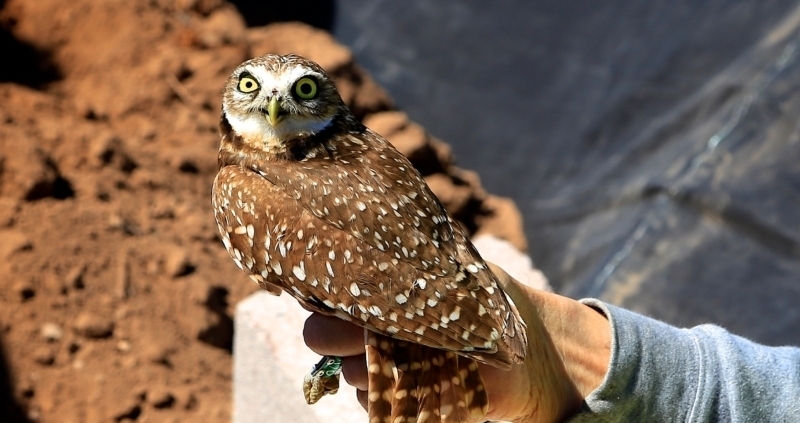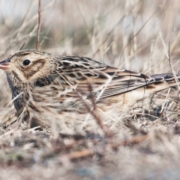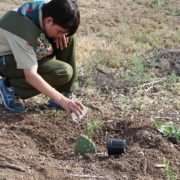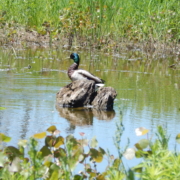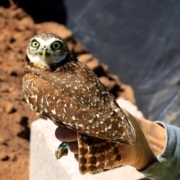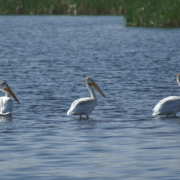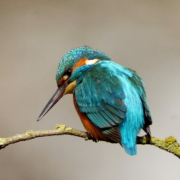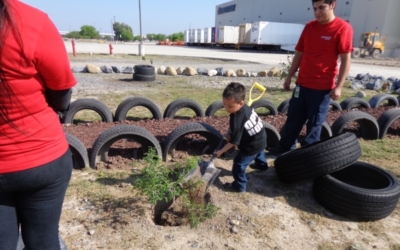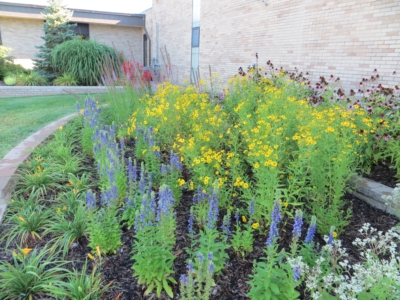Freeport-McMoRan | Teaming Up to Protect the Burrowing Owl in Arizona
En Español
Burrowing owls are unique among owls — not only are they often active during both night and day, they are also the only owl species that nests and roosts underground. As they aren’t able to dig their own burrows, they create homes from abandoned spaces dug out by other animals like ground squirrels. Unfortunately, burrowing owl numbers are declining, and they are considered a species of concern in Florida and many parts of the western United States. In an effort to protect the burrowing owl, companies like Freeport-McMoRan are implementing large-scale installation of artificial burrows, providing valuable and much-needed habitat for this unique and beautiful creature.
Located in the Gila Valley of Arizona, the Freeport-McMoRan Safford Operations program has made great strides to conserve burrowing owl habitat with artificial burrows and relocation procedures. The conservation project site, known as the San Jose Burrowing Owl Habitat, was selected for its ideal conditions — the adjacent agricultural fields support ample prey for burrowing owls, and the Gila River and riparian areas are far enough away that dangers such as flooding and predation by raptors are minimal.
Seeking expertise in burrowing owl habitat, the Freeport team partnered with WHC and Wild at Heart, an Arizona-based raptor rescue organization. The first phase of the project was launched in the spring of 2013 with the construction of 100 artificial burrows. Each burrow is paired with a wooden perch that owls use to watch for predators. Several clusters of burrows were opened later that year to encourage natural recruitment of owls to the site.
Collaboration with a diverse group of local partners is the key to this project’s success.
The second phase began in 2014, when the team worked with Wild at Heart to relocate 16 displaced burrowing owls to the site. Over two dozen volunteers from Freeport, Wild at Heart, WHC, local schools, and Boy Scouts troops constructed release tents and then placed the owls inside these temporary “homes.” The tents provided a safe space for the owls to acclimate to their new surroundings and the artificial burrows. After 30 days, during which the owls were provided food and water, the tents were removed. This relocation technique is commonly referred to as a “soft release,” with different variations used for relocating other wild animal species. The team was thrilled to discover that several breeding pairs had already established nests in the burrows; others moved to adjacent burrows after the tents were removed. The release tent construction and owl placement was repeated the next year with an additional 20 displaced owls, again with much success. Freeport employees continually monitor the habitat and the owls using it to ensure they are thriving.
This collaborative endeavor spearheaded by Freeport proved to be the key to this project’s success. Bringing together a diverse network of partners, such as WHC, Wild at Heart, Gila Watershed Partnership and Eastern Arizona College, was invaluable to accomplishing the various phases of the project and it generated broader enthusiasm about the habitat.
Both employee and community participation has also been instrumental to the project. This was evident at the first community event, which hosted over 100 participants. The Freeport team continues to engage the community in the project and increase awareness about the burrowing owl by hosting events such as Conservation Days, field trips with hands-on learning for nearby schools, and a celebration of the project’s success for the team and its partners.
The team’s exceptional efforts in burrowing owl conservation were recognized at the 2016 Conservation Conference, where they were awarded the 2016 Avian Project Award.
Related Content
- Blogs:
- Webinars:
- Project Guidances:
Quick Facts
| Site Name: | Freeport-McMoRan Safford Operations |
|---|---|
| Category: | Member Spotlight |
| Tags: | avian, Desert, Member Spotlight, Species of Concern |
| Site Location: | Safford, Arizona |
| Partners: | Boy Scouts, Eastern Arizona Community College, Gila Watershed Partnership, Wild at Heart |
| Certification Since: | 2014 |
| WHC Index Link: | Learn more about the program |
